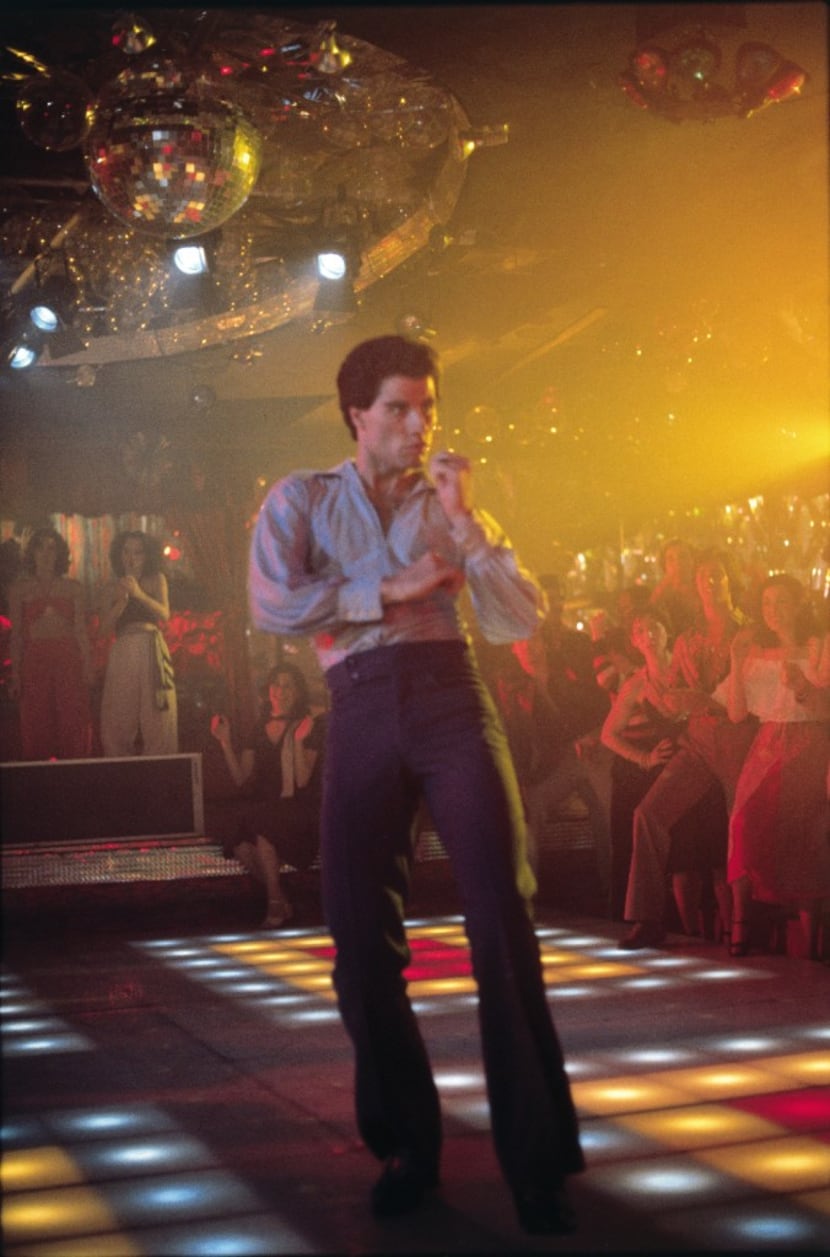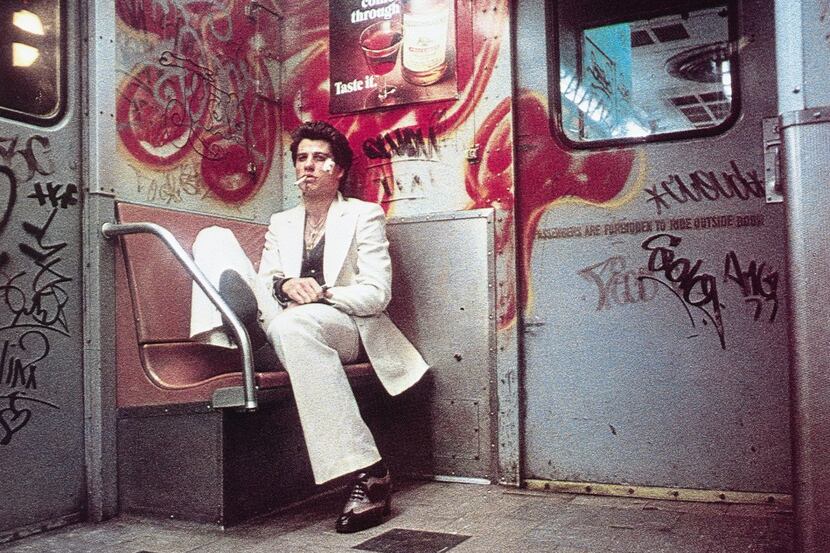Put on your boogie shoes, roll up your bellbottoms and step into the disco time machine. Destination: December, 1977. Star Wars mania has burned through half a year, and few have high expectations for a glittery new movie called Saturday Night Fever.
Forty years later, of course, we know the score. And the soundtrack. And the star. Faster than you can hum a bar of "More Than a Woman," Saturday Night Fever became a white-hot cultural phenomenon, celebrated, spoofed and watched over and over again. The double-album soundtrack, which launched the Bee Gees to superstardom, has reached sales of 40 million. By late 1978 there was even a PG version, free of the colorful Brooklyn street language and the naughty bits that earned the original an R. You know. For the kids.
Now the movie is grist for the nostalgia mill, where the word "no" has never been part of the vocabulary. A new Blu-ray, featuring the original theatrical version and a director's cut (with minimal changes) has sauntered onto shelves. If you'd rather try your luck shaking it in the aisles, you can see the Saturday Night Fever director's cut on the big screen May 7 and 10.
Director John Badham knew he might have something big on his hands the first day of shooting, when 15,000 John Travolta fans poured into the Bay Ridge neighborhood of Brooklyn and forced the crew to shut down for the day. But nobody really knew what the coming months and years had in store.
"I don't think anyone had a clue it would become as big as it did," says Donna Pescow, the Brooklyn native who made her movie debut as the jilted love interest Annette. "The studio and the filmmakers were hoping it would be successful, but it turned out to be more exciting than anyone envisioned. No one had planned for this kind of explosion."

Travolta wasn't yet a movie star, though he was on his way. He was the breakout personality of the sitcom Welcome Back, Kotter, which premiered in 1975. He had a small part in Brian De Palma's Carrie, and the lead in the TV movie The Boy in the Plastic Bubble. But when he sauntered down 86th Street to the pulsating beat of "Stayin Alive," Travolta entered another stratosphere.
Travolta's charm was required to make us warm up to Tony Manero, the leader of a racist, misogynist wolf pack cruising the streets of Brooklyn for cheap thrills. Tony eats with his mouth full of White Castle hamburgers. He treats women like dirt. But he's also a vivid version of a timeless archetype: the headstrong young man in a hurry, desperate for something beyond his provincial surroundings. In another decade and another place Tony could have been Jim Stark, the mumbling antihero of Rebel Without a Cause, or any number of the angry young men who populated the kitchen sink films of '60s England. But this is the '70s, in New York, and Tony finds his release at the local disco.
"Nobody sat around and planned to make some great pop-culture kitsch, Smithsonian time capsule of glitter balls and bellbottoms and platform shoes," says Barry Miller, who plays the tragic character Bobby C., in one of the Blu-ray features. "It was a story set in a working-class discotheque that dealt with an identity crisis and a profound questioning of society's rules and values. If the film had been set in a fishing plant or a cannery in some small, industrial town in Northern Scotland, I wonder if we'd be sitting around today discussing the nostalgic charms of the halibut."
Saturday Night Fever began as a New York magazine article by Nik Cohn, called "Tribal Rites of the New Saturday Night." Cohn spent several months hopping from disco to disco, observing the social rituals, and grew fascinated by New York nightlife outside of Manhattan. His travels led him to 2001 Odyssey, a Brooklyn disco where a young man named Vincent was cock of the walk.
"Vincent was the very best dancer in Bay Ridge — the ultimate Face," Cohn wrote. "He owned 14 floral shirts, five suits, eight pairs of shoes, three overcoats, and had appeared on American Bandstand. Sometimes music people came out from Manhattan to watch him, and one man who owned a club on the East Side had even offered him a contract. A hundred dollars a week. Just to dance."
The story caught the eye of producer Robert Stigwood, who had been seeking a new starring role for Travolta. Norman Wexler wrote the screenplay, which, in the '70s movie spirit, wasn't sanitized into safety and blandness. Badham signed on to direct. The Bee Gees took over the music. Travolta brought the wattage.
And pop culture brought the parodies. One of the best came in the 1980 comedy Airplane!, in which the big disco moment incorporate brawling Girl Scouts, drunken sailors and juggling:
More recently, the Bee Gees' "You Should Be Dancing" provided the capstone for Gru's redemption in Despicable Me.
Then there was the ultimate tribute that brought Travolta full circle. The Pulp Fiction dance scene with Vincent Vega and Mia Wallace ranks as one of the all-time great movie shoutouts.
All of which makes it easy to forget the darkness that pervades Saturday Night Fever: Annette in the backseat of the car, Bobby C. on the Verrazano Bridge, Frank Jr.'s crisis of faith: Tony doesn't just want to dance; he needs to dance. These tribal rites are no joke. Saturday Night Fever crossed over big time, but it still represents the down-and-dirty flavor that spiced up so many films in '70s Hollywood.
By all means, dance again. But take a look at the movie as well. Peel away a layer of that nostalgia. You might be surprised at what you see.

